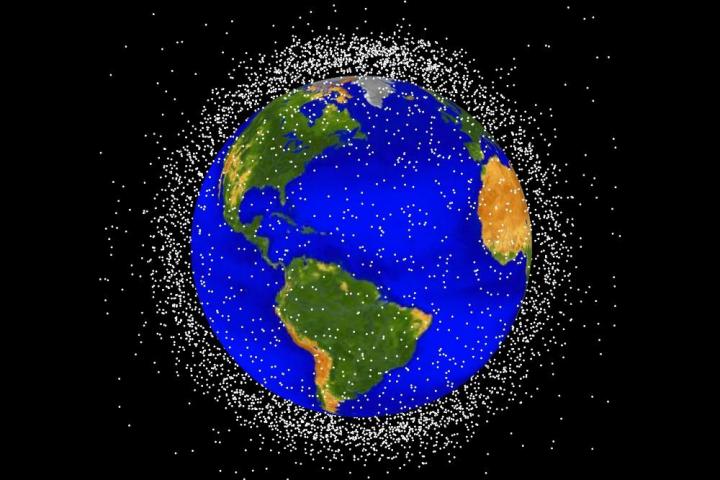
When you gaze up at the night sky and marvel at the wondrous sight of all those sparkling stars and faraway planets, it’s hard to imagine that’s there’s also a load of crap floating about up there. Our crap.
The problem of orbiting space junk – which includes stuff like abandoned satellites, bits of old rockets, and other odds and ends – has become so serious that it could affect the safety of future space missions or knock out important communications satellites.
In a bid to clear the growing mass of man-made junk circling our planet, the Japanese Aerospace Exploration Agency is teaming up with fishing net manufacturer Nitto Seimo (you can see where this one’s going) to create a special ‘magnetic net’ designed to gather up the floating debris.
Assisted by researchers at Kagawa University in southwestern Japan, the space nets will be tested in orbit next month.
According to the South China Morning Post, the team’s satellite will unreel a 300-meter-long wire capable of creating a magnetic field that theoretically should help it to gather up some of the junk. The net and its contents would then burn up as it enters the Earth’s atmosphere.
The Post‘s report highlights the need for such a clean up, with an estimated 100 million pieces of man-made debris currently circling Earth. Of those, around 22,000 are thought to be at least 10 cm in size – large enough to cause some serious damage to other objects that happen to cross their path.
Commenting on the ambitious project, Nitto Seimo’s chief engineer Koji Ozaki said his Hiroshima-based team has been working for some time on the development of the special net.
“We started work on this project about five years ago and we are all excited to see the outcome of this first test,” he told the Post, adding, “Fishing nets need to be extremely strong because they need to be able to hold a large number of fish, but our tether does not have to be that strong,” he said. “It is more important that it is flexible.”
The net is made up of three super-strong and ultra-flexible lengths of metal fiber, with Ozaki’s team having already developed one which is a kilometer in length.
If next month’s test goes according to plan, a fully operational system could be sent into space by 2019.
However, it appears that the situation is already reaching crisis point, with news just this week that the International Space Station has had to delay a special maneuver by several days because of 800 pieces of nearby space debris. And now even Hollywood’s touching on the subject.
[Image: NASA]


